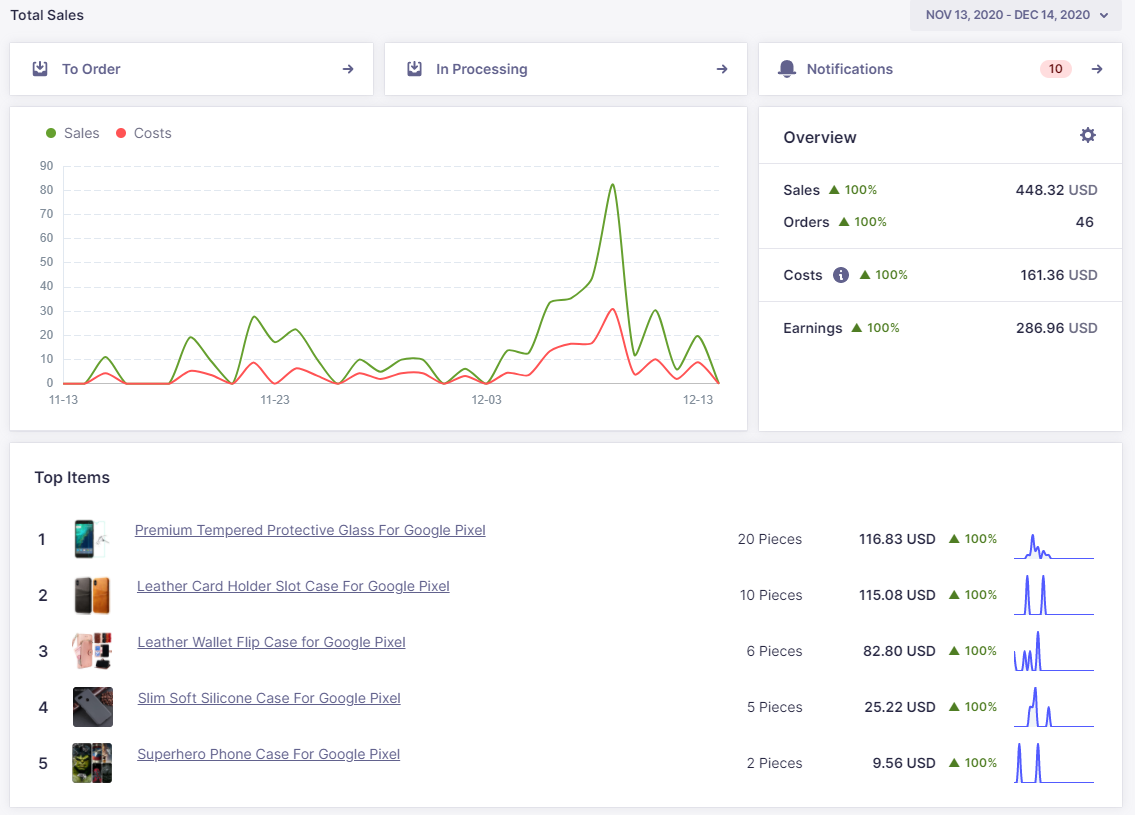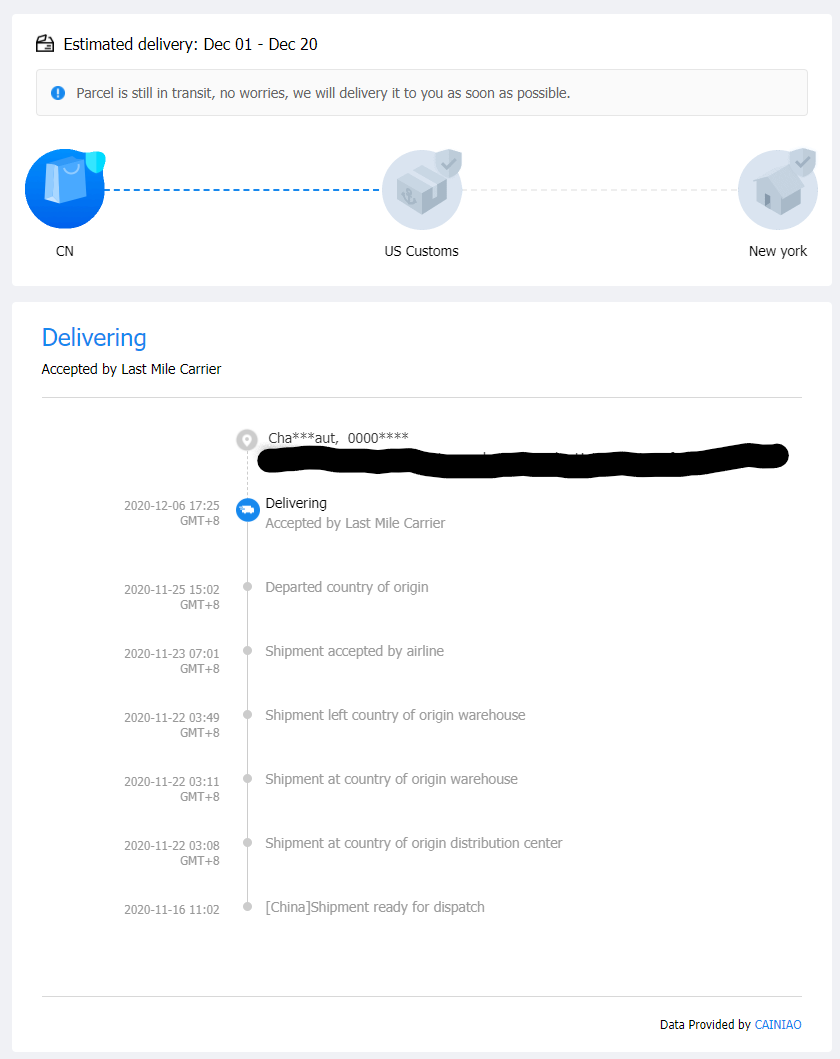Back in the beginning of the year when I was in Colombia, I built out an ecommerce site on Shopify with the intention of generating a small amount of revenue as part of my small business experiment. I wanted a business that would be easy to get off the ground and be low commitment while still allowing me to achieve my learning goals. Drop shipping seemed like a good option since it requires very little upfront capital investment and time. All I had to do was find a niche and figure out how to market to it. I started off by exploring products from China on AliExpress and landed on selling Google Pixel phone cases and accessories. Having owned almost ever Google Pixel phone, I know that the selection of cases and accessories for Pixels is small and most stores don't even offer any options for them. This made it a decent market to target. Although not big by any means it was niche enough for me to accomplish my purposes of generating revenue and experiencing what it is like to run an ecommerce shop.
Next was coming up with a name for my shop. A few minutes of brainstorming later, I decided on Pixel Perfect Cases. I picked a dozen products from AliExpress that were a mix of unique and practical, bought a domain name on Namecheap, setup an Instagram account, and started testing drop shipping times. This was in March of 2020 and it was at this point when COVID hit the U.S hard and caused me to reevaluate everything. Not only had COVID caused big disruptions on the supply chains from China (a screen protector I ordered took a few months to arrive!) I thought I should take a step back and refocus my energies around those businesses most impacted by the pandemic. This lead to a couple of blog posts, doing customer discovery interviews, and supporting lots of small businesses in New York City which I chronicled on an Instagram account I created getthisbreadnyc.
I learned a lot from that journey and also spent time exploring 3D printing, working on a bunch of side projects, researching launching a popup coffee shop, and volunteering with Tech for Campaigns and The Knowledge House. But recently I decided that it was a good time to go back to the ecommerce shop and just launch it. I realized that I wanted to gain deeper empathy than I could gain from only talking to people. I wanted to experience problems first hand and build products to solve my own problems. In October, I went ahead and "launched" the site by putting some money into Google and Facebook ads. In the months since launching the site, I have had lots of learnings already.
Although I had some success with Google ads I quickly stopped running Facebook ads since I was having no success with them at all . Phone cases are not a discovery purchase which makes them poor products to sell through Facebook ads. If people need a phone case, they will search for it which is why Google ads were way more successful.
Running ads for a few weeks gave me the data I needed to figure out my cost of getting orders. Phone cases from China are cheap. Like very cheap. Just a few dollars. Since my goal was to just generate some revenue, I originally had a 2x markup on what the cases cost me to buy from AliExpress. Most of my products ended up being listed at less than $5 on my site. I realized that was too low. It was costing me too much to acquire each customer so I was actively losing money. I increased the markup from AliExpress to 3x which allowed me to eek out a small amount of profit on each sale. I also experimented with rounding up the pricing to more aesthetic numbers (from $4.62 to $5 or $4.99) but that didn't make a difference.
The site also gave me experience with dealing with customer support. Just to enable Google ads, Google requires that your shop have a contact page with at least two ways of contacting your business. This can be a phone number, email address, or a physical address. Since I didn't want to give my physical address and hadn't setup a business phone or email yet, I used my personal email address and phone number to start. A personal Gmail address seemed unprofessional so soon after I setup a business email through Namecheap. All contact has been through email so far so I am still am using my personal phone number but I plan to change that as well and use a service like Reach that allows you to get a business phone number that forwards to your personal number. I might also try outsourcing the support work.
With my site setup, the orders quickly and steadily started coming in. And I could easily ramp up the sales by throwing more money into advertising.

This is when I started to experience the pains of Oberlo first hand. In 2017, Shopify acquired Lithuanian company Oberlo which was one of the most successful apps in their app store. Oberlo makes it easy to drop ship on Shopify. They accomplish this by "integrating" with AliExpress. Oberlo lets you search for products on AliExpress and import them into your Shopify store. When an order comes in, Oberlo connects to AliExpress to fulfill the order. This sounds great in theory but is an experience riddled with issues in practice. Once an order comes in, fulfillment through Oberlo is mostly done through a browser extension. This browser extension opens up a new window and goes to the AliExpress page for the item or items that are being ordered and adds them to the cart with a note letting the vendor know it is for drop shipping, the customer's address is added, and you manually press the checkout button. I ran into a few issues with this extension where the wrong product was selected and the customer didn't receive what they wanted. The AliExpress login system is also very buggy. You are frequently logged out of the site and logging back in often fails. I didn't have many orders so this was manageable but far from a scalable experience.
Once an order is placed, the drop shipping times are about a month long. For certain items this might be acceptable, but for phone cases this has proved to be problematic. Since people buy phone cases when they have an immediate need for one, they want it quickly. Shipping times have been the source of lots of customer emails. More than half of the customers (about 50) have emailed about the delivery time. This complaint is second to only the wrong order coming. The amount of customer support emails increased even more towards the end of December as people noticed the cases were taking a long time and they were hoping cases would be delivered by Christmas. I felt really bad about this so my solution for any who has reached out about the delivery time has been just to issue a full refund. Everyone has been fine with this so far. To solve this, I have tried adding more products from Spocket which is similar to Oberlo but focused on U.S. and U.K. based products. I was hoping this would lower the shipping times. Even though the Spocket selection is very limited compared to what is available on AliExpress, it allowed me to add more expensive products. I still have not gotten any sales on my Spocket products.

In the beginning of December, I stopped running ads effectively putting the shop on pause. I have learned all I wanted to from drop shipping and I no longer want to deal with it anymore. While I was frustrated with the experience, drop shipping was a good way to get data on what phones people are looking for cases for and which cases people like. Now I plan to continue my experiment by using this data to buy wholesale. I plan to buy some of the popular cases in bulk from AliExpress and ordering new products on Faire (a marketplace for buying wholesale from independent vendors). I also have a customer base of close to a 100 people that I know want these products. This next round of learning will allow me to gain direct experience with handling inventory and shipping. If this is mildly successful, it might be worth buying in larger quantities from AliExpress and then have them handled in Amazon FBA.

Here is a summary of my experience
Problems:
1. Drop shipping experience from China is still very clunky
2. Shipping times from China are prohibitive
3. Selection of products from U.S. based drop shipping suppliers is still small
5. Shopify analytics are not as advanced as you would like
Next steps:
- Get resale license in New York
- Handle inventory by wholesaling from AliExpress and Faire
- Outsource customer support
- Setup an accounting system
- Figure out how to handle taxes for 2020
